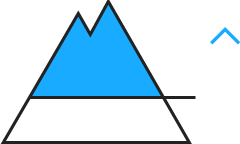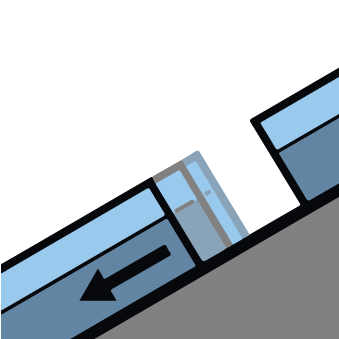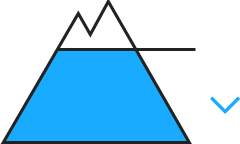
Danger level
 | treeline
|
Avalanche Problem
 | | Wind-drifted snow |
|  | |  |
 | | Gliding snow |
|  | |  |

Wind slabs are to be assessed critically.
The extensive wind slabs of the last few days can be released even by a single winter sport participant. Caution is to be exercised in particular on very steep slopes, as well as at transitions from a shallow to a deep snowpack especially at high altitudes and in high Alpine regions. Avalanches can penetrate deep layers and reach dangerously large size. The prevalence of avalanche prone locations and likelihood of triggering will increase with altitude. Remotely triggered avalanches are possible in isolated cases.
The danger of gliding avalanches will persist. Areas with glide cracks are to be avoided as far as possible.
Experience and restraint are required.
Snowpack
dp.6: cold, loose snow and wind
dp.2: gliding snow
Some snow will fall on Monday in the north. The wind will be light to moderate.
The wind slabs of the last few days are lying on soft layers. This applies at high altitudes and in high Alpine regions. Avalanche prone weak layers exist in the centre of the snowpack. Towards its base, the snowpack is faceted. The snowpack will be moist at low and intermediate altitudes.
Tendency
The weather conditions will bring about a slight stabilisation of the snowpack.

Danger level
 | treeline
|
Avalanche Problem
 | | Wind-drifted snow |
|  | |  |
 | | Gliding snow |
|  | |  |

Wind slabs require caution. Gliding avalanches are still possible.
The fresh and older wind slabs are prone to triggering in all aspects above the tree line. Avalanches can be released, even by a single winter sport participant and reach medium size. Caution is to be exercised in particular on very steep slopes, as well as at transitions from a shallow to a deep snowpack especially at high altitudes and in high Alpine regions. Additionally avalanches can also be triggered in the old snowpack and reach large size in isolated cases.
In the regions with a lot of snow more gliding avalanches are possible, even quite large ones.
Experience in the assessment of avalanche danger is important.
Snowpack
dp.6: cold, loose snow and wind
dp.2: gliding snow
Some snow will fall on Monday in the north. The wind will be light to moderate.
The wind slabs of the last few days are lying on soft layers, in particular at high altitudes and in high Alpine regions. Avalanche prone weak layers exist in the centre of the snowpack. The snowpack will be moist at low and intermediate altitudes.
Tendency
The weather conditions will facilitate a slight stabilisation of the snowpack.

Danger level
 | treeline
|
Avalanche Problem
 | | Wind-drifted snow |
|  | |  |
 | | Gliding snow |
|  | |  |

Wind slabs represent the main danger. This applies above the tree line.
As a consequence of new snow and a strong wind from westerly directions, extensive wind slabs formed by Saturday above the tree line. These can in some cases be released easily especially at their margins. The prevalence of avalanche prone locations and likelihood of triggering will increase with altitude.
In addition in particular at low and intermediate altitudes, further gliding avalanches are possible. This applies especially in the regions with a lot of snow.
Meticulous route selection is recommended.
Snowpack
dp.6: cold, loose snow and wind
dp.2: gliding snow
Some snow will fall on Monday. The wind will be light to moderate. The wind slabs of the last few days are lying on soft layers. This applies at high altitude. Avalanche prone weak layers exist in the centre of the snowpack. Towards its base, the snowpack is faceted. The snowpack will be moist at low and intermediate altitudes.
Tendency
The avalanche danger will decrease gradually.












